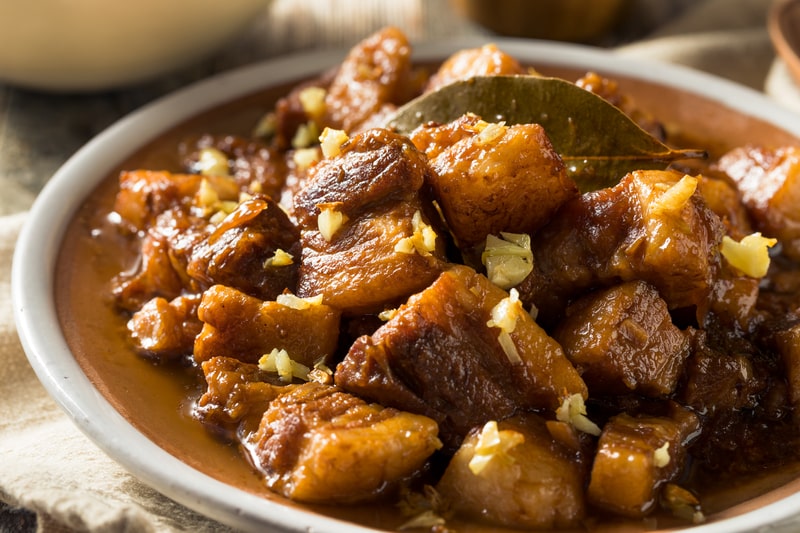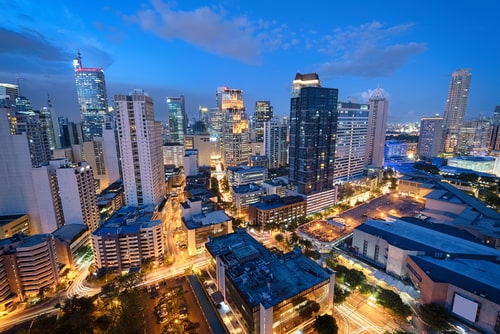Last updated on September 8th, 2022
Philippines, officially the Republic of the Philippines, is an archipelagic country in Southeast Asia. It has an area of 300,000 square km. Manila is its capital and Quezon City is its largest city. Filipino and English are its official languages. Peso (PHP) is its official currency. The Philippines is the third largest English speaking country in the world.
From beautiful emerald rice fields to bright sandy beaches, tropical forests filled with wildlife to teeming mega-cities, the Philippines is a paradise with friendly people and vibrant cultural experiences just waiting to be explored. Here are 50 facts about the Philippines covering its history, culture, people, economy, archipelago and some interesting things.
Facts about the Philippines archipelago
1. The Republic of the Philippines is the world’s second largest archipelago made up of over 7,100 islands. The country is divided into three key geographical areas. Luzon is the large island to the north on which the capital city Manila is located. Mindanao is the large island to the south. The Visayas are the group of islands lying between them in the middle. The Philippine’s flag has three stars on it to symbolize these three sections of the country.
2. The Philippine islands are surrounded by the Philippine, South China, Celebes, and Sulu Seas as well as the Luzon straight. This provides them with 36, 289 kilometers (22,540 miles) of coastline that includes natural harbors, beautiful coves, and spectacular sandy white beaches. The country has the fifth largest coastline of any country in the world. Taiwan is directly to the north of the Philippines.
The Philippines on the map
3. Located on the western edge of the Pacific’s Ring of Fire, the Philippines has hundreds of volcanoes and an average of 20 earthquakes per day (most so faint they can’t be felt). The three most active volcanoes are Mount Pinatubo, the Taal Volcano, and the Mayon Volcano.
Historical facts about the Philippines
4. The Negritos were the area’s earliest inhabitants in prehistoric times (and still live in nomadic tribes in the tropical forests today). Exchanges of peoples with Chinese, Indian, Malay and Islamic states then occurred.
5. Spanish colonization began with Ferdinand Magellan in 1521 and in 1543 Spanish explorer de Villalabos names the archipelago for the crown prince (later King Philip II) of Spain. The Philippines remained a Spanish colony for over 300 years.
6. As part of the settlement of the Spanish-American war, Spain cedes the Philippines to the United States in 1898. The U.S. begins to incorporate the islands’ Muslim areas by force.
7. Japan seizes the Philippines in 1941 at the beginning of World War II; U.S. forces retake the islands in 1944. The islands are granted their full independence in 1946 (the first Southeast Asian country to gain independence after the war) and renamed the Republic of the Philippines. The U.S. military is awarded bases on the island in 1947.
8. President Ferdinand Marcos is elected in 1965 and declares martial law seven years later. He lives lavishly while the people live in poverty. He is ousted in 1986 by the “people power” revolt over a stolen election.
9. Several presidents come and go, some through coups amid corruption allegations. Movie actor turned President Joseph Estrada is ousted in 2001 by a military–backed uprising of the people and sentenced to life in prison but later pardoned.
10. Abu Sayyaf Muslim extremists take 20 hostages and troops comb the jungles in the southern island of Basil for them in 2001. In 2002 the Filipino and U.S. armies hold joint counter-terrorism exercises near the stronghold of this same Al-Qaeda-linked group.
11. In September 2009 the Army captures a leading figure in the MILF and in November a group of people on Mindanao are attacked, killing 57. The massacre shocks the country. February 2010 the army captures the Aby Sayyaf leader of the kidnapping and murder of Christian missionaries in 2001. A former provincial governor and 195 more people are charged with murder for the Mindanao massacre. President Benigno Aquino is elected.
Flag of the Philippines

12. In the southern Philippines in 2015, hundreds of Muslim rebels register to vote in the 2016 elections under the peace treaty signed to end 40 years of conflict. In October, a typhoon hits the northern Philippines, killing 59 and causing extensive damage to fisheries and farms.
13. In 2016, an international tribunal rules that claims China made in 2012 to the Scarborough Shoal reef off the coast of the Philippines in the South China Sea (with its significant gas and oil resources) has no legal basis.
Culture
14. Filipino culture has been influenced by both the East and the West with significant influences by Spain and the U.S. also. It owes much to its Malay heritage as well. There are an enormous 184 individual languages spoken in the Philippines but Filipino (Tagalog) and English are the country’s official languages.
15. From their Austronesian ancestors Filipinos are their famous “bayanihan”; a warm spirit of camaraderie and kinship they exhibit as a culture. From the Chinese comes their close emphasis on family ties and support. Their Catholic religion comes from the Spaniards who brought their Christian faith with them in the 1500s.
16. Though officially the Philippines are a secular state, Christianity is the dominant faith and over 80 percent of the population is Catholic. Traditional district festivals (barrio fiestas) that commemorate patron saints’ feast days are common. The Moraines and Sinology fiestas are two of the better-known community celebrations and they include music and dancing as well as feasting.
17. Traditional Philippine folk dances like the “sigil” and the “tinkling” (featuring clashing bamboo poles and jumping patterns) are being preserved by the Bayanihan Philippine National Folk Dance Company. Filipinos still dress up and wear their national costumes of special occasions, with women dressed in a “tern” (a long dress with flared skirt and butterfly sleeves) and men wearing slacks and a “barong tagalong”, which is a special shirt with sleeves made out of pineapple pulp.
18. As of the 2000 census, 28 percent of the country’s population was Tagalog, 12 percent were Cebuano, and Ilocano, Visayas, Bicol, and Hiligaynon were all less than ten percent each. Another 25 percent of the population can be broken down into more than ten non-tribal and indigenous people groups.

19. The national dish of the Philippines may well be the adobo, a stew of port or chicken cooked with soy sauce, vinegar, garlic, bay leaf and peppercorns. “Adobo” means sauce in Spanish but the Filipino version was indigenous to the islands long before the arrival of Magellan. Other popular dishes include singing, halo-halo, lumpier, fish sauce and milkfish.
20. Meals are typically eaten three or four times each day. Besides breakfast, lunch and dinner a family might have “merienda” which is a late afternoon dessert or snack time. Rice is important in the Filipino diet and may be eaten at every meal.

21. Children go for six years to elementary school and then for four years to high school for their mandatory education. The University of Santo Tomas in Manila was founded in 1611 and the University of San Carlos in 1595, making them both older than Harvard University, which was not opened until 1636. Most of the students in the Philippines’ universities are female; they earn two-thirds of all master’s degrees awarded and most all of the doctorates.
22. The Filipinos celebrate secular holidays as well as Christian, Chinese and Muslim ones. Some notable ones are the Day of Valor, in which Boy Scouts re-enact and honor those on the Bataan Death March; Independence Day on June 12 and National Heroes Day on August 30, in addition to all the religious holidays.
23. Christmas season in the Philippines starts in September and ends with the Feast of the Three Kings in January. Christmas feasts (Noche Buena) are said to compare to American’s Thanksgiving dinner.
24. Basketball is the Filipinos’ most popular sport but cockfighting (or sabong) is also quite popular (particularly with men). Sabong existed in the islands before the Spanish arrived. The Philippines own Manny Pacquiao is currently regarded as the world’s best boxer and when his bouts are on television, crime drops to almost zero in the cities.
25. Social media is important to Filipinos. The Philippines is now considered the text capital of the world. With more than 450 million SMS messages sent by the residents daily, they surpass the daily texts sent in Europe and the U.S. combined.
Facts about Filipinos
26. On July 27, 2014, the birth of a baby girl made the population of the Philippines officially become 100 million. The Philippians was the twelfth country in the world to reach this number.
27. Half of the Philippines population is estimated to live on the island of Luzon. The population is densest in the city of Manila.
28. As of 2007, there were an estimated 12 million native Filipinos living and working overseas. The money sent home by these people accounts for approximately 11 percent of the economy of the Philippines.
29. The Philippines supplies the rest of the world with approximately 25 percent of all the overseas nurses that are available worldwide.
30. The Philippines struggles with human trafficking. It has the fourth largest number of children who are prostituted in the world. There are an estimated 375,000 girls and women in the sex trades. They range in age between 15 and 20, with some as young as 11 years old.
. . . continue reading on the next page.
